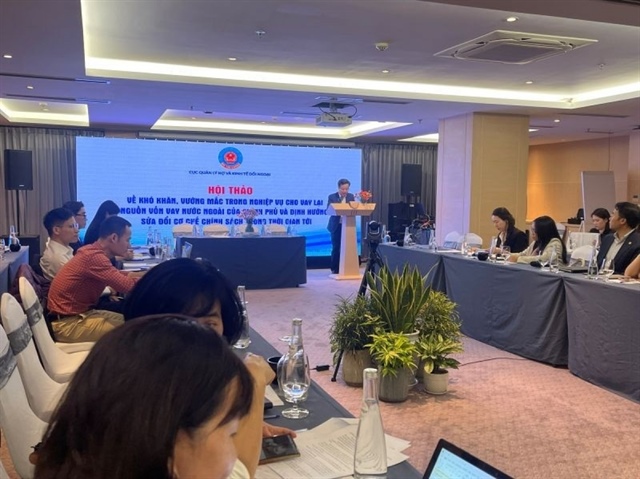Vietnam’s labor productivity dips behind Laos
Vietnam’s labor productivity dips behind Laos
Vietnam has seen its labor productivity reach a value of US$6,776 per worker per year, much lower than that of other regional countries such as Laos, Sai Gon Giai Phong news site reported, citing Dr. Vu Xuan Hung, director of the Department of Formal Training at the Directorate of Vocational Education and Training (DVET).
The HCMC branch of the Vietnam Chamber of Commerce and Industry (VCCI-HCMC) on April 19 collaborated with DVET, under the Ministry of Labor, Invalids and Social Affairs and German international cooperation agency GIZ, to arrange a seminar discussing the regulations on labor law and the engagement of firms in vocational training.
Previously compared with Singapore, Thailand and Malaysia, Vietnam clearly showed low labor productivity, Hung noted, adding that the country’s productivity is now lagging behind Laos, whose productivity value is recorded at US$7,023 per worker per year.
Speaking at the seminar, Vo Tan Thanh, vice president of VCCI and director general of VCCI-HCMC, stated that the Labor Law has been in place since 2013, stipulating the role of firms involved in training the workforce in Vietnam.
However, after the six-year deployment of the law, the quality of labor fell short of expectations, he explained, adding that many firms still suffer a shortage of highly skilled manpower.
The cooperation between firms and education centers and schools plays a key role in enhancing the quality of labor, Thanh remarked, adding that firms, however, showed little interest in training.
Hung pointed out that Vietnam’s competitiveness was ranked 77th among 140 countries and territories in 2018, and its vocational skills are weakening.
Of the total 55 million laborers in the country, a mere 22% of them are trained, Hung noted.
To help firms get involved in professional training and education, it is necessary to introduce a system of coordination between the State agencies, schools and enterprises, Hung said.
Besides this, it is vital to clearly define the rights and responsibilities of the related parties in terms of vocational training activities involving enterprises.






















